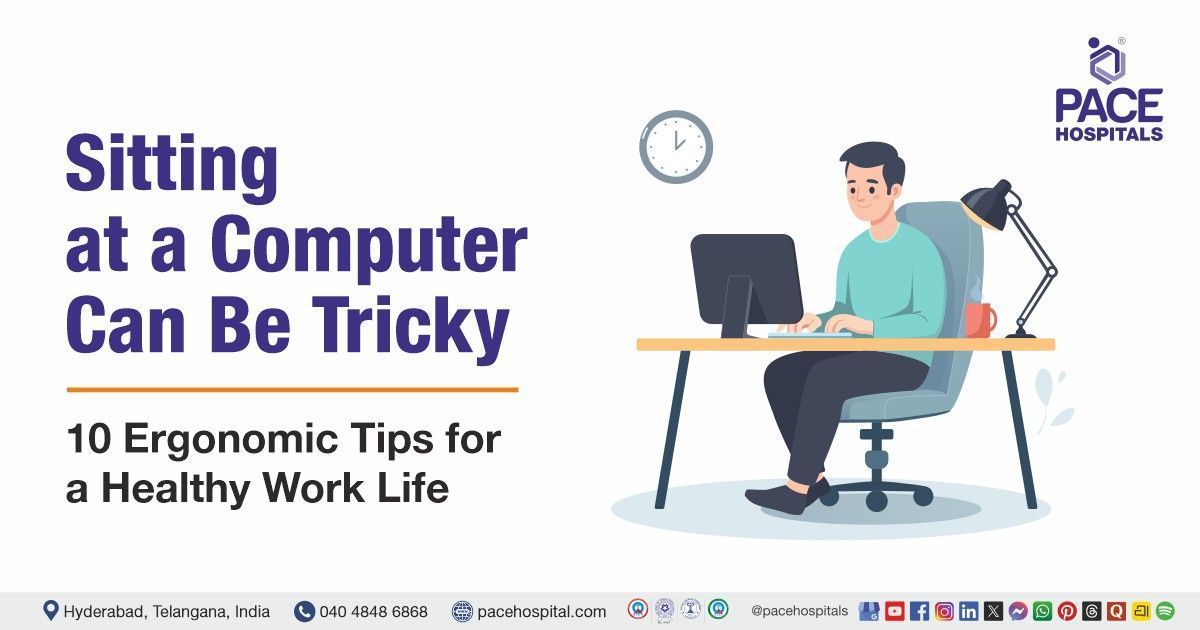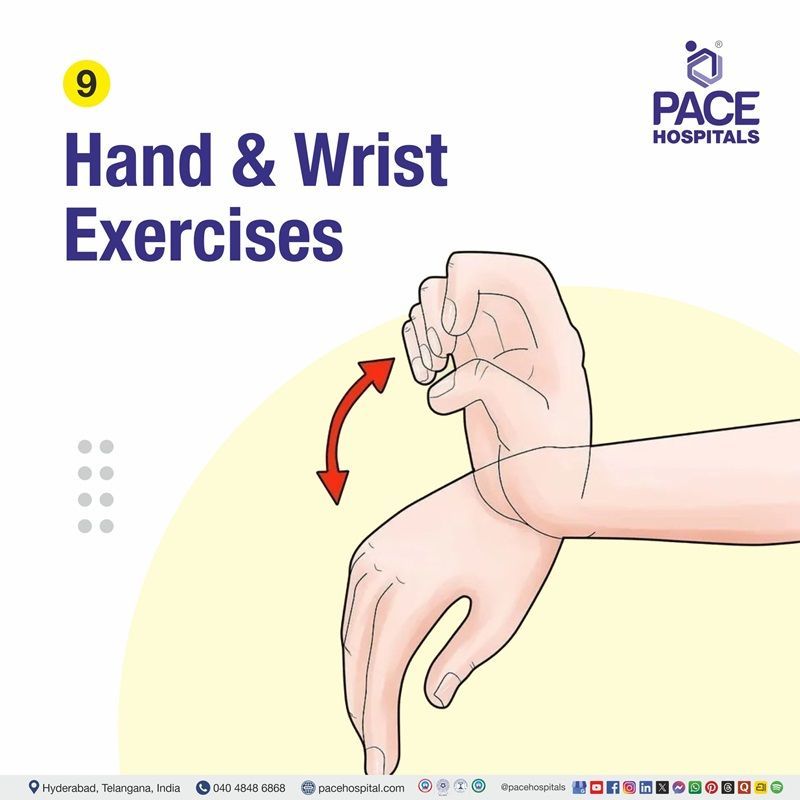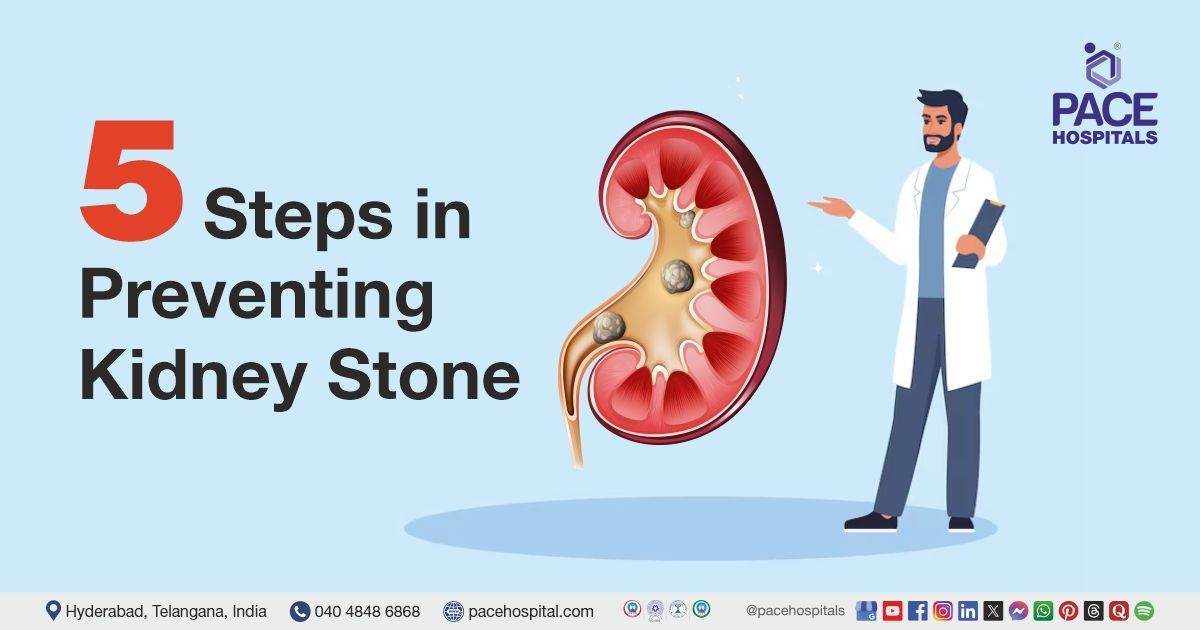Sitting at a Computer Can Be Tricky – 10 Ergonomic Tips for a Healthy Work Life
PACE Hospitals
Written by: Editorial Team
Medically reviewed by: Dr. Mounika Jetti - General Physician and Diabetologist
Introduction: Why Your Desk Setup Matters
In today’s digital world, most of us spend hours in front of computers — working, studying, or connecting virtually. While technology enables productivity, prolonged sitting and poor posture can silently harm your body. Over time, it can lead to back pain, neck stiffness, carpal tunnel syndrome, obesity, and even cardiovascular issues.
At PACE Hospitals Hyderabad, specialists in orthopaedics, physiotherapy, and occupational health emphasize that “how you sit is as important as how long you sit.” By maintaining proper posture and following ergonomic habits, you can prevent injuries, improve circulation, and boost your overall well-being.
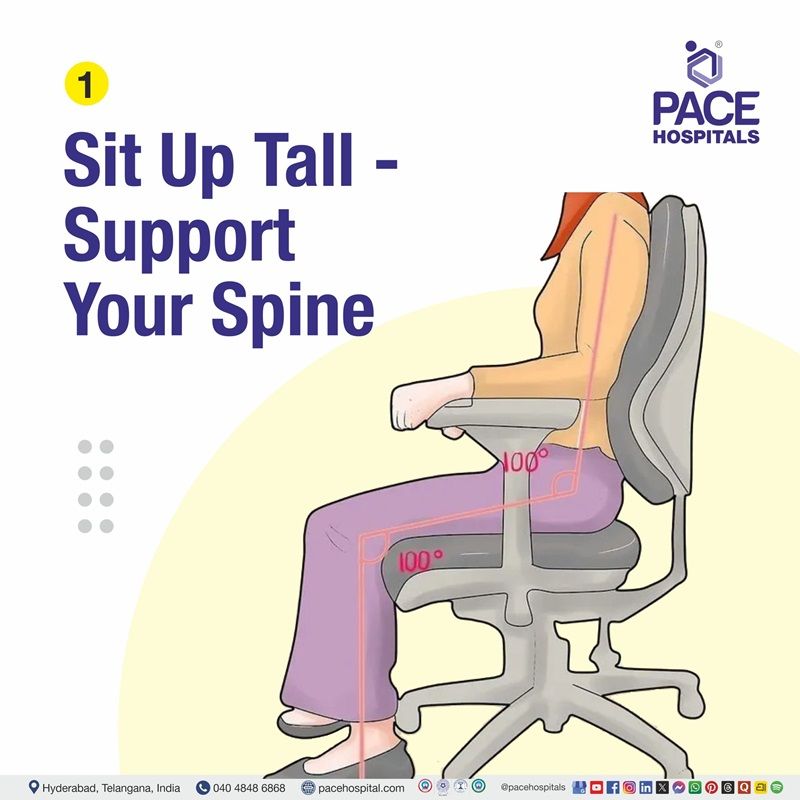
Sit Up Tall — Support Your Spine
Begin by pushing your hips all the way back in your chair. Adjust the seat so that your feet rest flat on the floor, and your knees are either level with or slightly below your hips.
- The chair’s backrest should support the natural curve of your lower back.
- Set the recline angle between 100°–110° for comfort and proper alignment.
- If needed, use a small pillow or lumbar roll to support your spine.
- Adjust armrests so your shoulders are relaxed — or remove them if they cause strain.
PACE Hospitals - Physiotherapy Tip: If your chair has an "active back" feature, use it to shift positions regularly, preventing stiffness and pressure on your spinal discs.
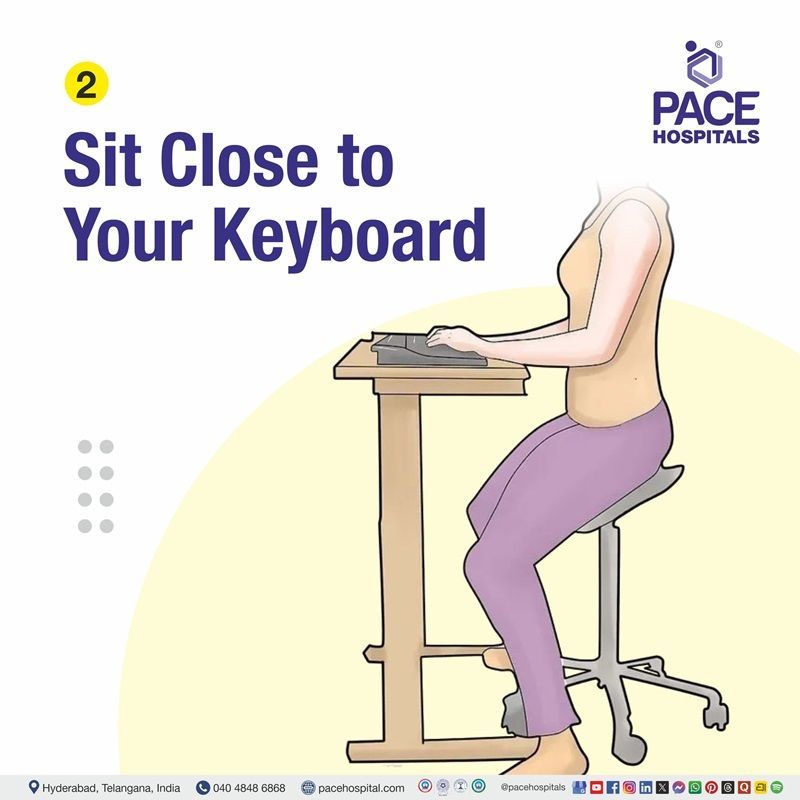
Sit Close to Your Keyboard
Position your keyboard directly in front of you, centered with your body. Keeping your elbows close to your sides, forming a 90°–100° angle.
Avoid stretching forward or sideways — it strains your shoulders and wrists.
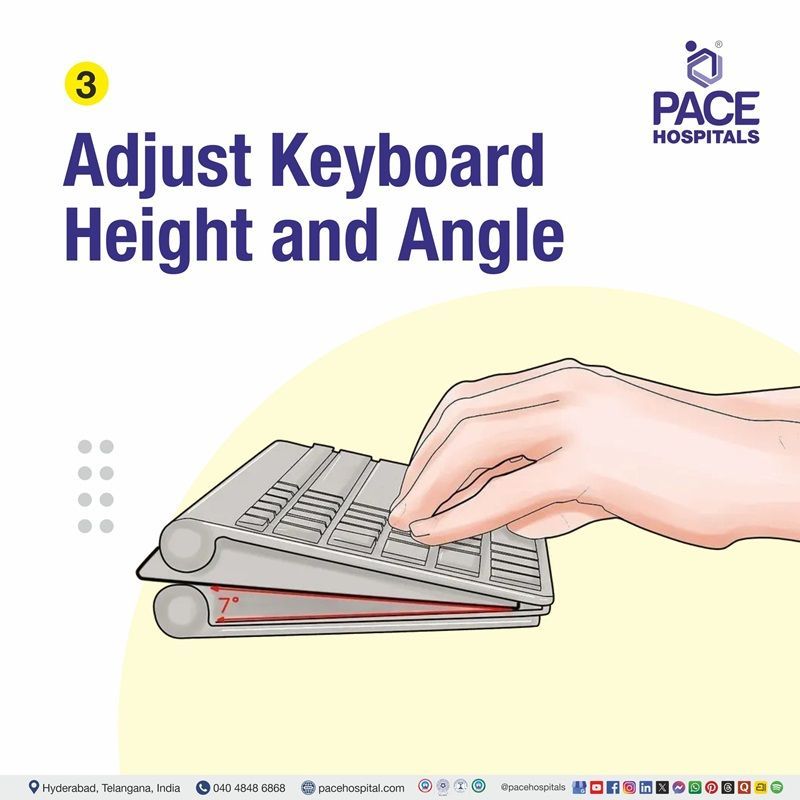
Adjust Keyboard Height and Angle
Your shoulders should remain relaxed, with straight wrists and slightly open elbows. If your keyboard tray allows, tilt it away when sitting upright or tilt it forward slightly if you’re reclining.
This keeps your wrists in a neutral position, helping to lower the risk of repetitive strain injuries such as carpal tunnel syndrome.
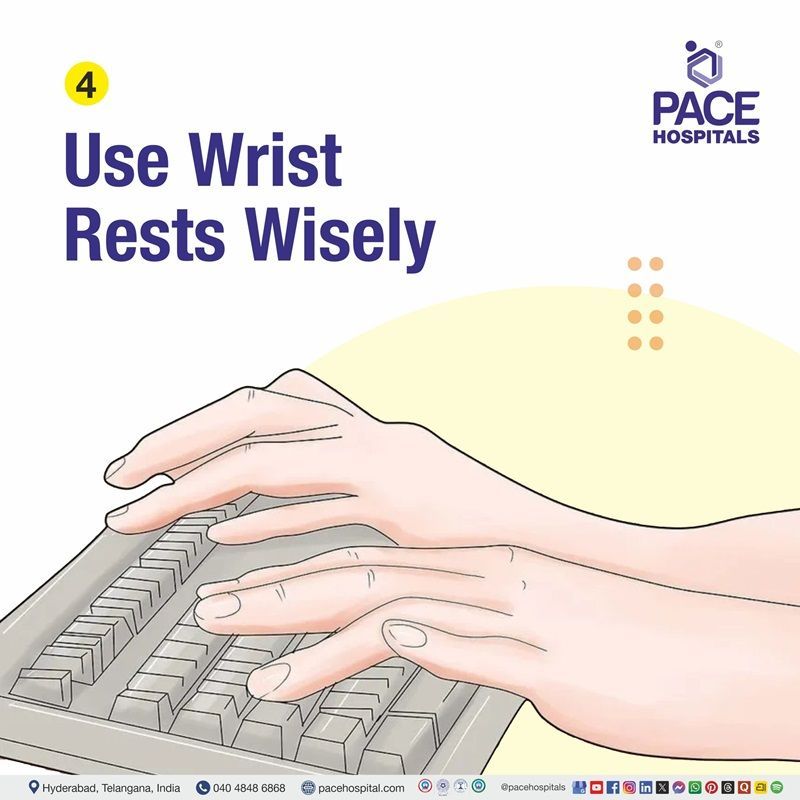
Use Wrist Rests Wisely
Soft wrist rests can offer comfort but avoided leaning on them while typing. Use them only to rest your palms between keystrokes.
Place your mouse or trackball close to the keyboard, ideally at the same height, to minimize shoulder and arm movement.
PACE Health Tip: Learn mouse-free shortcuts to reduce wrist strain and increase efficiency.
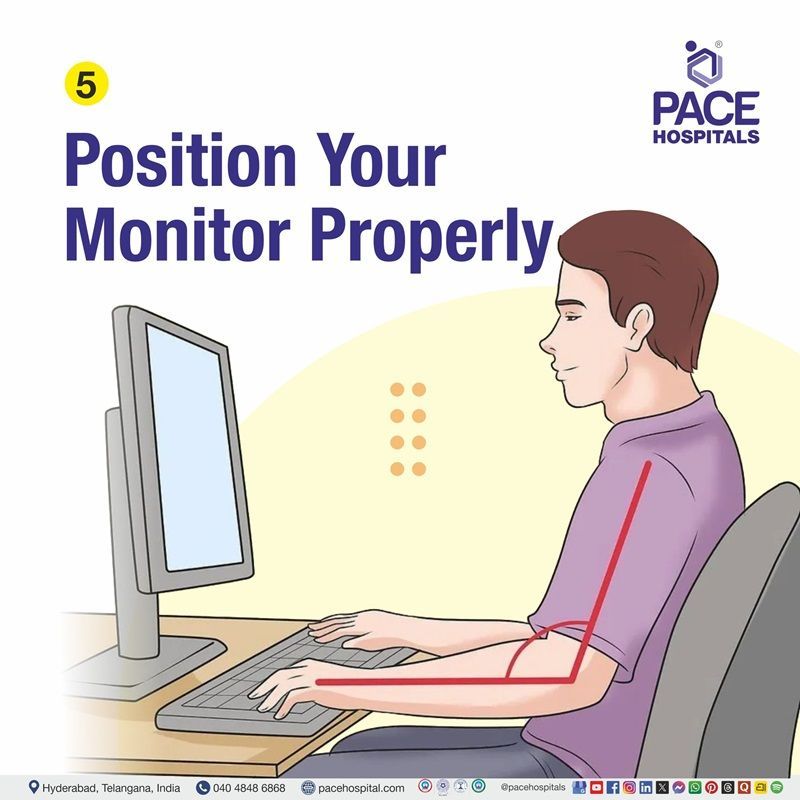
Position Your Monitor Properly
The way your monitor placed determines your neck and back posture throughout the day.
Follow these simple guidelines:
- Center the monitor directly in front of you, not off to the side.
- Keep the top of the screen 2–3 inches above eye level.
- Sit one arm’s length away from the screen.
- Tilt the screen slightly backward (10°–20°) to reduce glare.
- Adjust curtains or blinds to avoid reflection from windows.
If you wear bifocals, lower the screen slightly to avoid neck extension.
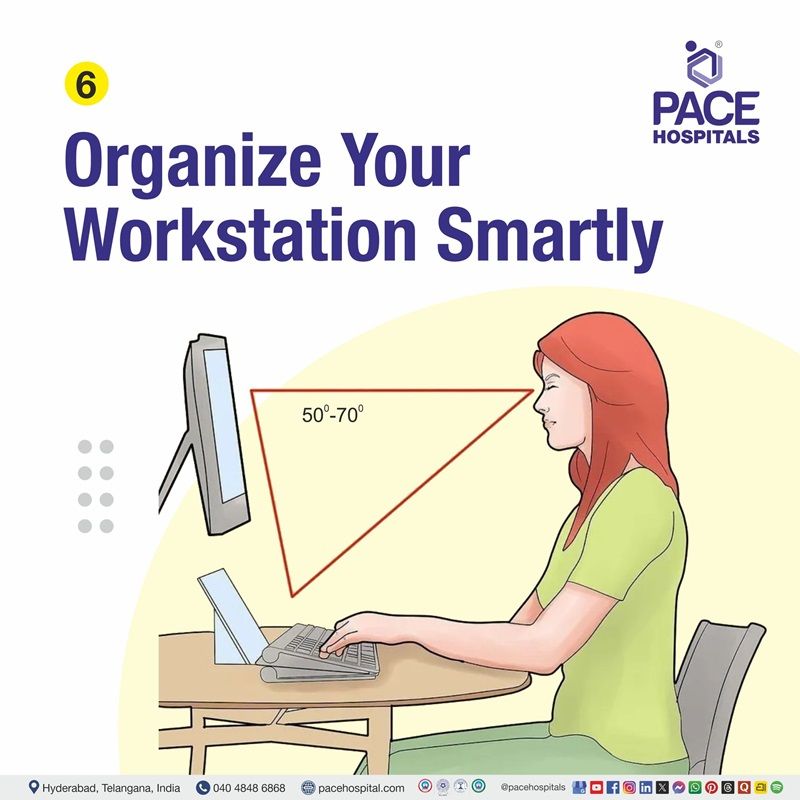
Organize Your Workstation Smartly
If you refer to documents while typing, use an in-line copy stand between the keyboard and monitor.
If that's not possible, use a document holder beside the monitor to prevent repetitive neck movement.
Keep frequently used items — like your phone or notepad — within easy reach to avoid awkward stretching.
PACE Suggestion: Use a headset or speakerphone to eliminate neck strain from cradling your phone between ear and shoulder.
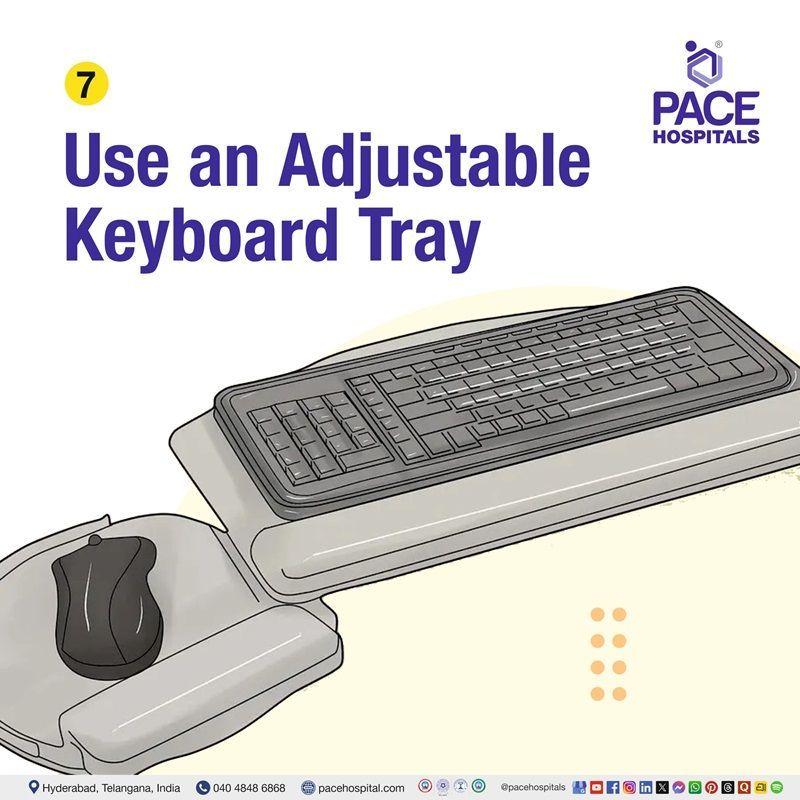
Use an Adjustable Keyboard Tray
An articulating keyboard tray allows for better posture flexibility. It should:
- Accommodate both keyboard and mouse
- Enable leg clearance
- Have adjustable height and tilt
If unavailable, adjust your chair or desk height manually. Use a footrest if your feet don’t touch the floor comfortably.

Move Often – Take Micro-Breaks
Prolonged sitting can slow blood circulation, tighten muscles, and even impact your metabolism.
Try the 20-20-20 rule:
A simple eye exercise to prevent digital eye strain: every 20 minutes, look at 20 feet away for at least 20 seconds helps to ease eye strain and refresh your focus.
Additionally:
- Stand or walk for 2–3 minutes every 30 minutes.
- Stretch your arms, back, and legs.
- Use sit-stand desks or active chairs when possible.
At PACE Hospitals, physiotherapists recommend 5–10 minutes of light stretching every hour — especially if you work long desk hours.
Hand and Wrist Exercises
Perform simple resistance exercises to strengthen your fingers, wrists, and forearms.
Try this routine 4–6 times a day:
- Stretch your fingers wide, hold for 5 seconds.
- Gently push back on your fingers with your other hand to stretch tendons.
- Rotate wrists clockwise and counterclockwise.
- Do 15 slow resistance reps per hand.
These micro-movements prevent stiffness and improve blood flow to tendons, reducing your risk of carpal tunnel and forearm fatigue.
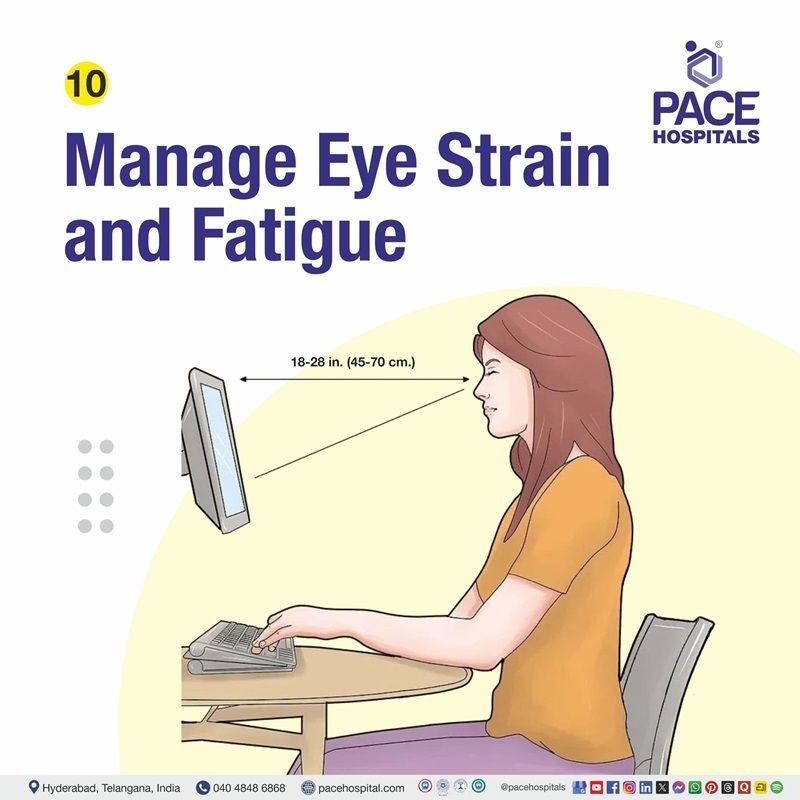
Manage Eye Strain and Fatigue
Digital Eye Strain (DES) is increasingly frequent among computer users. Symptoms such as headaches, dry eyes, and blurred vision.
Simple Eye Care Tips:
- Blink often to keep your eyes moist.
- Adjust screen brightness and contrast.
- Maintain proper ambient lighting.
- Every hour, close your eyes for 10–15 seconds to relax muscles.
- Schedule regular eye checkups if you spend more than 6 hours/day on screens.
PACE Hospitals’ ophthalmologists recommend anti-glare screens and blue light filters for people with chronic screen exposure.
Bonus: Mindful Work-Life Integration
Healthy ergonomics isn’t only about posture — it’s also about mental balance and overall wellness.
- Take mental breaks: Step away from screens during lunch.
- Hydrate regularly — dehydration worsens fatigue and headaches.
- Set work boundaries: Avoid late-night exposure to screen, as this can support your natural sleep cycle.
- Move often: Incorporate short walks after meetings or calls to keep your body active.
PACE Wellness Tip: Practicing deep breathing or brief meditation between tasks to ease and sharpen focus.
When to See a Doctor
If you experience any of these despite doing ergonomic adjustments:
- Constant neck or back pain
- Numbness or tingling in the fingers
- Frequent headaches or blurred vision
- Shoulder stiffness or wrist swelling
Consult an orthopaedic or physiotherapy specialist.
At PACE Hospitals Hyderabad, our Spine Care, Physiotherapy, and Occupational Health teams provide personalized posture analysis, workstation assessments, and rehabilitation plans to restore comfort and productivity.
Frequently Asked Questions About Better Sitting Posture at Work
Why does sitting at a computer cause pain?
Prolonged sitting with poor posture strains your spine, neck, and wrists, leading to muscle tension and joint pain. Ergonomic adjustments help prevent this.
How often should I take breaks from my computer?
Take a 1–2 minute stretch break every 30 minutes and stand up for 5–10 minutes every hour to relieve pressure on your spine and muscles.
What are the symptoms of poor ergonomics?
Neck pain, back stiffness, wrist tingling, eye strain, and fatigue are common signs of bad posture and workstation setup.
What’s the ideal monitor position?
Place your monitor directly in front of you, about an arm's length away. The top of the screen should be at or just below eye level to maintain good posture and reduce neck and eye strain.
How can I reduce eye strain from screens?
Follow the 20-20-20 rule - every 20 minutes, look 20 feet away for 20 seconds. Blink often and use blue light filters.
How can one sit properly at a desk?
Sit upright with hip all the way back in the chair and keep your feet flat on the floor, knees level with hips, and back supported. Keep your monitor at eye level and keyboard centered.
How can I prevent wrist pain while typing?
Use wrist rests only between keystrokes, keep your keyboard flat, and avoid bending your wrists upward while typing.
Can sitting too long cause serious health problems?
Yes. Extended sitting increases risk of obesity, heart disease, diabetes, and spinal issues. Regular movement improves blood circulation and posture.
When should I see a doctor for computer-related pain?
If pain persists for over two weeks or you experience numbness, tingling, or weakness, consult a physiotherapist or orthopaedic specialist at PACE Hospitals.
Why choose PACE Hospitals for posture and pain care?
PACE Hospitals provides comprehensive ergonomic evaluation, physiotherapy, and spine care with modern diagnostics and personalized rehabilitation programs.
Share on
Request an appointment
Fill in the appointment form or call us instantly to book a confirmed appointment with our super specialist at 04048486868

